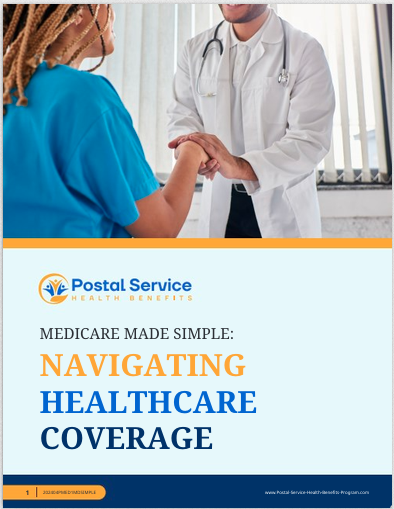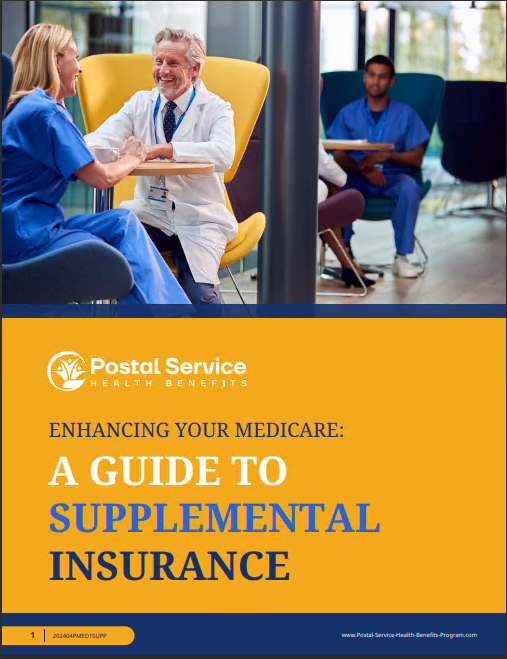Key Takeaways
-
Employer contributions significantly reduce your out-of-pocket health insurance costs and provide comprehensive coverage options.
-
Understanding the structure of your health plan can help you make better financial and healthcare decisions.
Why Employer Contributions Matter
Employer contributions play a pivotal role in your overall health plan. As a Postal Service employee or annuitant, these contributions help offset the premiums for your Postal Service Health Benefits (PSHB) plan. Without them, health insurance costs could quickly become a burden.
Your employer typically covers about 70% of the total premium costs. This means you pay significantly less for high-quality healthcare coverage, giving you peace of mind and protecting your financial future. These contributions extend to various types of coverage, including Self Only, Self Plus One, and Self and Family plans.
Employer contributions also provide a safety net for unexpected healthcare expenses, ensuring you and your family can access necessary services without financial strain. By reducing the financial burden, you can allocate more resources to other priorities, like saving for retirement or managing household expenses.
How Employer Contributions Impact Premiums
The portion your employer contributes directly reduces your share of the monthly premium. For example, with a Self Only plan, the government’s contribution might cover over half the cost, while for Self and Family plans, the contribution becomes even more substantial. This system ensures affordable options for both individual and family coverage.
Comparing Costs
Employer contributions enable you to access robust health plans that would otherwise be unaffordable if purchased independently. While premium amounts vary by plan and coverage type, the shared cost approach provides substantial savings compared to standalone private insurance options.
When you understand the cost breakdown, you can better appreciate the value of employer-supported plans. Over the course of a year, these contributions could save you thousands of dollars, particularly when covering multiple dependents under family plans.
Enhanced Benefits Through Employer Support
Employer-supported health plans often come with added benefits that make them even more valuable:
-
Reduced Deductibles and Copayments: PSHB plans frequently offer lower deductibles and copayments, making routine and emergency healthcare services more accessible.
-
Access to Comprehensive Networks: With employer-backed plans, you gain access to expansive networks of healthcare providers, ensuring you’re covered for a wide range of medical needs.
-
Additional Health Services: Many plans include wellness programs, preventive care services, and other perks that improve overall health and well-being.
-
Financial Predictability: Employer contributions create a predictable framework for your healthcare expenses, shielding you from unexpected cost increases.
Breaking Down Out-of-Pocket Costs
While employer contributions significantly lower your premiums, understanding other out-of-pocket expenses is crucial. These include deductibles, copayments, and coinsurance. Fortunately, PSHB plans often feature competitive cost-sharing terms:
-
Deductibles: These are the amounts you pay before your insurance starts covering certain services. PSHB plans generally have manageable deductible levels, especially for in-network services.
-
Coinsurance and Copayments: After meeting your deductible, coinsurance or copayments apply for most services. Employer contributions often help reduce these costs, keeping healthcare affordable.
-
Out-of-Pocket Maximums: These caps limit your total financial liability, offering protection against catastrophic medical expenses. Employer-supported plans often set reasonable maximums to safeguard your finances.
Leveraging Medicare Integration
If you’re a retiree or approaching retirement age, combining PSHB coverage with Medicare Part B can further maximize your savings. Many PSHB plans coordinate benefits with Medicare, offering reduced out-of-pocket expenses and enhanced coverage options.
Key Advantages:
-
Lower Overall Costs: Medicare integration can eliminate or reduce deductibles and copayments.
-
Improved Prescription Coverage: PSHB plans often include a Medicare Part D Employer Group Waiver Plan (EGWP), lowering prescription drug costs.
-
Streamlined Healthcare Access: Combining plans simplifies billing and ensures seamless coverage for a broad range of services.
By coordinating with Medicare, you not only save money but also enhance your access to specialized care, preventive services, and prescription medications.
Making Informed Decisions During Open Season
Each year, Open Season provides the opportunity to evaluate and adjust your PSHB plan. Understanding employer contributions and how they affect your overall costs can help you choose the best option for your needs. Keep these factors in mind:
-
Premium Costs: Compare your share of the premium across different plans to identify the most affordable option.
-
Coverage Details: Ensure the plan you select meets your specific healthcare needs, including family and preventive care.
-
Out-of-Pocket Maximums: Consider plans with caps on out-of-pocket expenses to protect against unexpected medical costs.
-
Plan Flexibility: Review the range of providers and services available within each plan’s network to ensure it aligns with your health priorities.
Employer Contributions and Family Coverage
Employer contributions become even more impactful when extending coverage to your family. By covering a substantial portion of Self Plus One and Self and Family premiums, your employer ensures that dependents receive the same high-quality care without excessive financial strain.
Supporting Families
Family plans provide:
-
Affordable Access: Employer contributions keep costs manageable for family coverage.
-
Comprehensive Services: Dependents gain access to essential medical, dental, and vision care.
-
Peace of Mind: Knowing your family is protected reduces stress and improves overall quality of life.
Employer contributions also make it easier for families to access routine care, such as vaccinations, annual checkups, and screenings. This proactive approach to health management supports better long-term outcomes for all covered members.
Addressing Rising Healthcare Costs
Healthcare costs continue to rise, but employer contributions help buffer these increases. By negotiating with insurance providers and covering a significant portion of premium costs, your employer ensures that you remain protected without excessive financial burden.
Staying Ahead of Changes
As healthcare policies evolve, staying informed about employer contributions and plan changes is essential. Regularly review plan updates and communicate with your HR department or benefits coordinator to understand any adjustments that may affect your coverage.
By being proactive, you can anticipate changes to your healthcare needs and budget, ensuring continuous and effective coverage.
The Long-Term Value of Employer Contributions
Employer contributions do more than lower your immediate costs—they provide long-term financial stability. By keeping healthcare affordable, these contributions allow you to:
-
Save for other financial priorities.
-
Access high-quality care without hesitation.
-
Protect against catastrophic medical expenses.
-
Plan confidently for retirement, knowing your healthcare needs are accounted for.
Employer contributions are not just a financial perk—they’re an investment in your health and well-being, enabling you to focus on what matters most.
Maximize Your Benefits Today
Understanding the impact of employer contributions on your PSHB plan empowers you to make the most of your health benefits. Whether you’re an active employee or a retiree, taking full advantage of these contributions ensures you and your family receive the care you deserve without unnecessary financial strain.
Empowering Your Savings Through Employer Support
By taking the time to understand how employer contributions shape your PSHB plan, you’re better equipped to make informed decisions about your healthcare. Remember to evaluate your options regularly and leverage all available resources to maximize your benefits.






